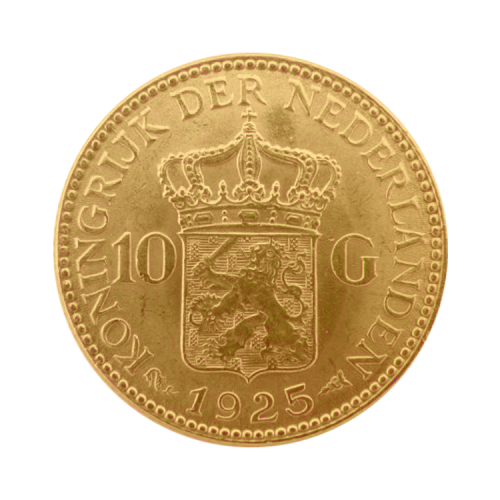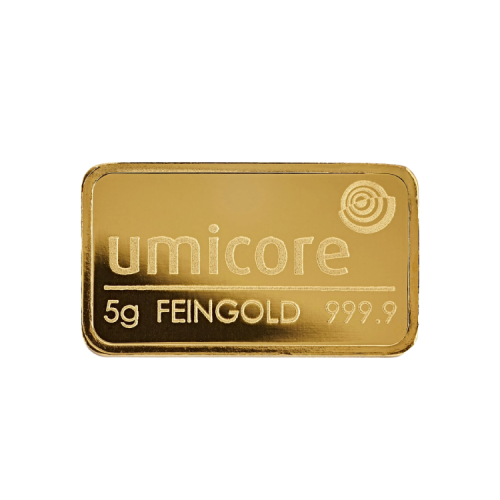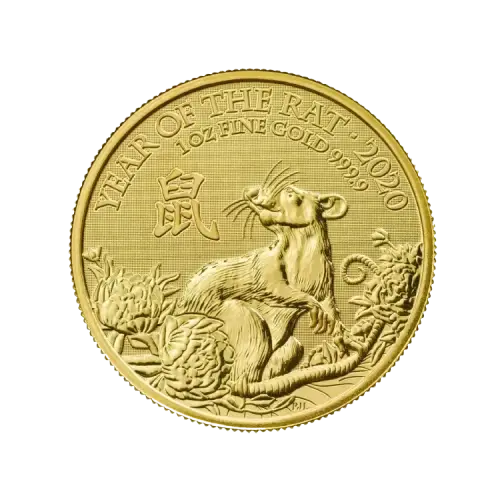Coins through the years, from collector to investment coins
Update: 9 December 2024 Reading time: 8 min
-IbjvUkT3.jpg)
Coins throughout the years, from collectible to investment coins
Gold has been used to make coins for centuries. The first good-quality gold coins were minted at the behest of King Croesus, immortalized by the phrase “as rich as Croesus.” Croesus' Lydian kingdom was an important trading state in the 6th century BCE. The gold coins that Croesus had minted, called staters, became indispensable for trade because of their uniform weight, size and purity
The Lydians are also credited with inventing the first method for testing the purity of gold. To be sure of the value of coins, merchants could rub the gold object over a black stone. The black stripe also contained markings of needles with a known proportion of gold, and thus the purity of the coin could be compared to the desired purity.

The solid gold Greco-Bactrian stater coin, depicting King Eucratides
The world's largest coin from antiquity was commissioned by the Greco-Bactrian kingdom, during the reign of King Eucratides between 170 and 145 B.C. There is only one known example of this 20 stater coin handed down from antiquity. The coin is completely made of gold, weighs over 169 grams and is 58 millimetres in diameter. Today, this coin is considered one of the most famous coins of antiquity.

A Roman solidus coin
The Romans had an insatiable appetite for gold. They routinely reduced the value of their currency because the need for coins exceeded the supply of precious metals. In an attempt to bolster declining confidence in constantly diminished Roman currency, Constantine issued an almost pure gold coin called the solidus, which later became known as the bezant.

A Venetian ducat from 1384-1400
The bezant proved to be particularly stable over time. It has also been called the dollar of the Middle Ages. The coin remained in production for more than 700 years, long after the fall of the Roman Empire.
Gold coins were also minted by medieval Italian city-states. One of the best known is the Venetian ducat. The Spanish doubloon was used from the 15th to the 19th century and was minted in Spain, Mexico and Peru from gold mined in South and Central America.

An escudo gold coin from the wreck of the Atocha
During the 16th and 17th centuries, large quantities of silver and gold were shipped from the New World to Europe in armed convoys of 60 to 100 ships. Dutch, British and French privateers constantly attacked Spanish fleets. Although more losses occurred from violent storms at sea than from pirates and bandits, the danger was considered a serious threat.

A gold coin struck during the US Gold rush
During the California Gold Rush, private companies and banks minted their own gold coins. It was simply more convenient to mint coins locally than to wait for new issues from the official U.S. Mint. Unofficial coins were accepted everywhere and these very coins are highly sought after by collectors today.
By the 19th century, the world was so attached to gold that it led to silver's decline in prestige and its dissolution as a monetary standard. It would be another century before currencies were also completely decoupled from the international gold standard established in the 1870s.
After World War I, when paper currency lost its value due to widespread inflation, most countries stopped minting gold coins to preserve their reserves. Although most gold coins were initially intended as legal tender, gold coins today fall into two broad categories, collector coins and investment coins, although there is some overlap between the two.

The 1933 double eagle coin, the most expensive coin in the world
Collector coins are coins whose value is determined by many factors, including age, rarity, condition and the number of coins originally minted. You have gold collector coins and silver collector coins. In 2002, a 1933 U.S. Double Eagle twenty-dollar gold coin fetched more than $7.5 million dollars, making it the most valuable coin ever sold. Although about half a million Double Eagle coins had been minted by the US Mint in 1933, most of these were surrendered and melted down into gold bars after Executive Order 6102 by President Franklin D. Roosevelt, which was issued to prevent US citizens from exchanging their paper money for gold during the Great Depression.
Since "the Order" made it illegal for US citizens to "hoard" gold, only a few coins managed to survive the recall. Experts estimate that only one per cent of all pre-1933 US gold coins survived the smelter, which explains why they are sought after by coin collectors and investors.

The reverse of a 1988 gold Britannia coin
Some investment coins, such as the American Eagle and the Britannia, are issued in special "proof" editions, which are sold to collectors at high premiums. Proof coins are struck two or more times with finely etched dies so that every detail is enhanced. Because they are beautiful, many proof coins are incorporated into jewellery.
Recently, an unknown number of 2007 George Washington dollar coins have entered circulation without the edge inscription "In God We Trust". No one knows how many coins were released without the inscription, but estimates are around 50,000. The selling price on eBay peaked at $600, before dropping to around $50 each when the public realised how many were in circulation.

A coin from 113-112 BC depicting voting for an election in the Roman Republic
Commemorative coins are coins minted in honour of important events, persons or places. Commemorative coins can be issued as ordinary coins, as circulating coins with limited production or as non-circulating legal tender, also called collectibles or souvenirs.
This is a long-standing practice; the Greeks and Romans were already producing gold commemorative coins to celebrate victories on the battlefield or on the political stage.

Emperor Hirohito's 60th anniversary 100,000 yen gold coin
The largest issue of a commemorative coin took place in 1986, when more than nine million gold coins were minted to commemorate the 60th anniversary of the reign of Emperor Hirohito of Japan. The coin was also meant to mark Japan's emergence as an economic superpower and displayed the imperial chrysanthemum on the obverse.
Investment coins, coins whose value is based on the value of their troy-weight and the market price of the metal they contain, are popular with people looking to invest. South Africa started this trend when it launched its one-ounce investment coin, the Krugerrand, in 1967.

The South African Krugerrand
South Africa's Krugerrand was sold to major distributors at a premium of three per cent. The Krugerrand was the first gold coin to contain exactly one ounce of fine gold. Because the coins were legal tender, they could be bought by US citizens who were banned from owning bullion at the time but were allowed to have foreign coins.

The Canadian "Maple Leaf"
The next investment coin issued was the Canadian Maple Leaf in 1979. Since then, several other investment coins have been produced. These coins are also produced in fractions of an ounce; usually half-ounce, quarter-ounce and tenth-ounce. Purity levels range from .9999 to .9167.

The Austrian Philharmonic coin
Worldwide, the best-selling investment coin is the 24-carat Austrian Philharmonic coin. Since their introduction in 1989, the coins have been minted based on demand. Thus, the quantity of coins produced varies from year to year. However, the design of the coin remains the same and shows the pipe organ in the Golden Hall on the obverse, while the reverse depicts the instruments of the Vienna Philharmonic.
Disclaimer: The Silver Mountain does not provide investment advice and this article should not be considered as such. Past performance is no guarantee of future results.
 Over Rolf van Zanten
Over Rolf van Zanten
Director and owner












-Psfmhzrc-web_normal.png)

